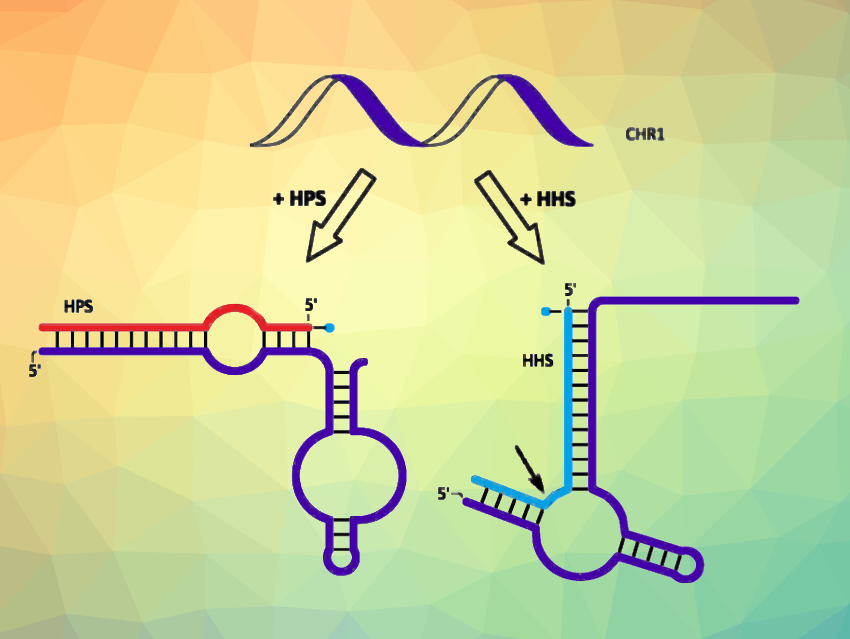Ribonucleic acid (RNA) enzymes, or ribozymes, are oligonucleotides that can catalyze chemical reactions. The hairpin ribozyme (HPR) and the hammerhead ribozyme (HHR) are examples of ribozymes that can catalyze RNA cleavage and ligation reactions. Both are found in plant pathogens and are named after the shapes of their secondary structure.
Sabine Müller, University of Greifswald, Germany, and colleagues have investigated whether both HPR and HHR folds can be induced in a single RNA sequence, depending on an added substrate. They designed this RNA sequence (pictured in dark blue) using the consensus sequence that is found in both the hairpin and the hammerhead ribozyme. Starting from the sequence of the wild-type hairpin ribozyme, 15 mutations and an extension by six nucleotides at the 5′-terminus were needed to allow folding into both the HPR and the HHR structures. These two folds were obtained by adding two different substrates, the hairpin substrate (HPS, pictured in red) or the hammerhead substrate (HHS, pictured in cyan).
The team called this single RNA sequence that can adopt two folds chameleon ribozyme (CHR). It can cleave both substrates (HPS and HHS) by adopting the corresponding hairpin or hammerhead fold. In addition, the hairpin fold of CHR can also promote the ligation of two suitable fragments. Overall, the work shows that a small RNA can process different substrates, supporting both RNA cleavage and ligation. According to the researchers, this conformational flexibility might be an important feature for the emergence of new functional folds in early evolution.
- Two RNA Folds from One Sequence: A Ribozyme with Versatile Substrate Processing Abilities,
Sabine Müller, Jikang Zhu, Dorothea Dierks, Christina Möller, Darko Balke,
Angew. Chem. Int. Ed. 2024.
https://doi.org/10.1002/anie.202409047


Good.